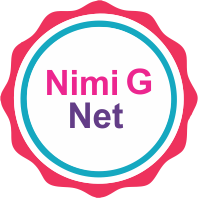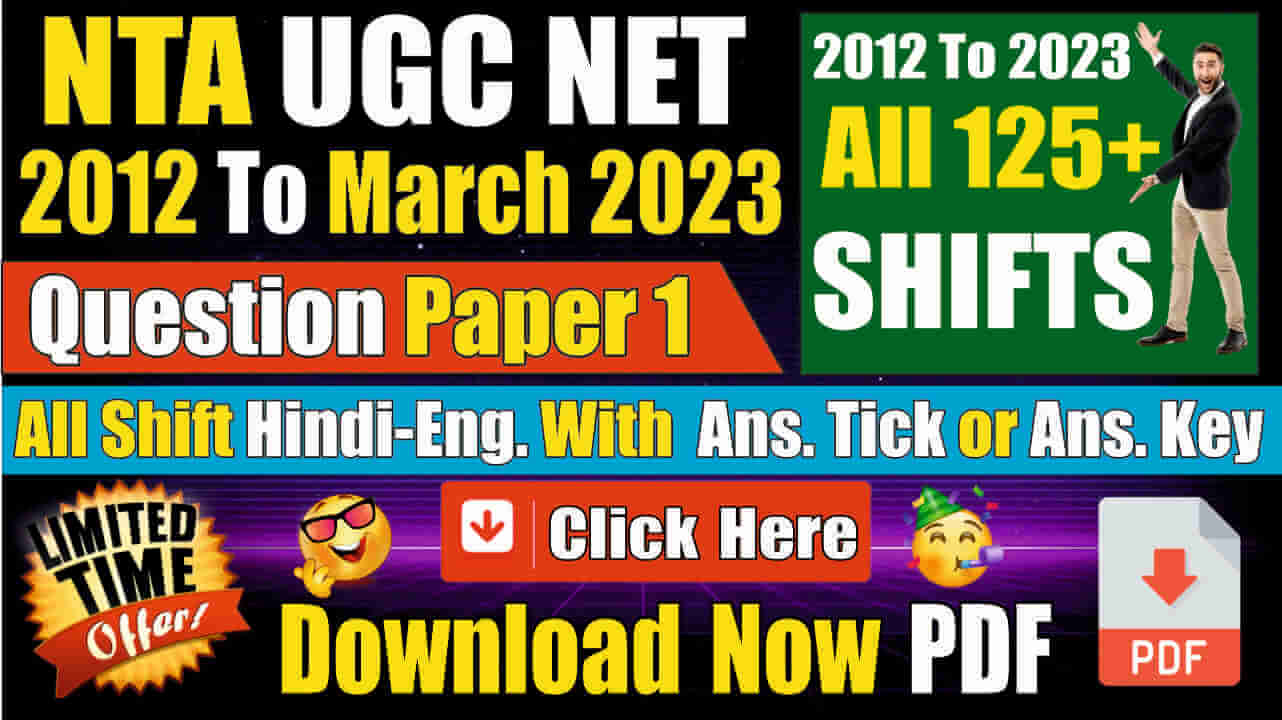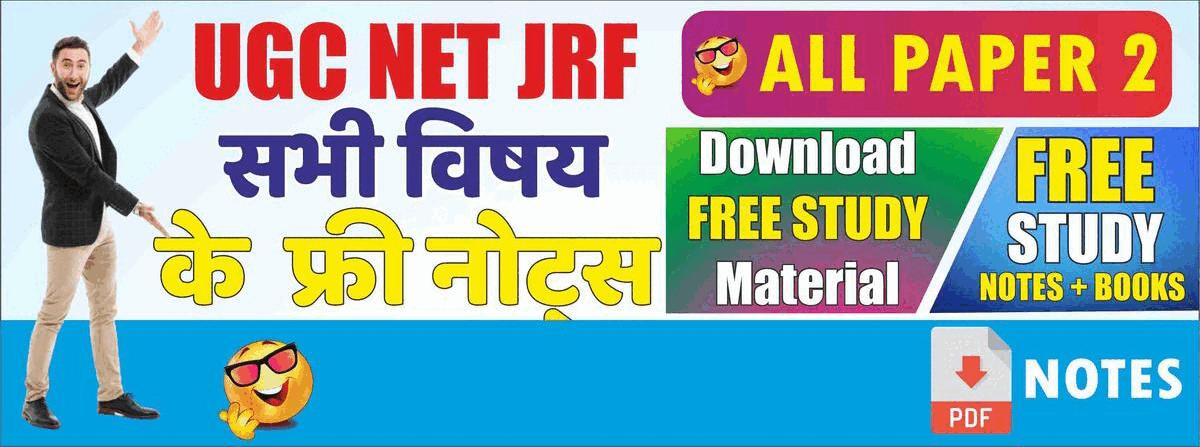Are you searching for the UGC NET Home Science Syllabus 2023 PDF Download? Look no further, as we have compiled all the important details and tips to help you prepare for the exam.
The UGC NET Home Science exam is conducted by the National Testing Agency (NTA) for candidates who wish to pursue a career in the field of Home Science. The exam assesses the candidates’ knowledge in the subject and tests their eligibility for lectureship and research fellowships.
If you are planning to appear for the UGC NET Home Science 2023 exam, it is important to have a thorough understanding of the syllabus and exam pattern. In this article, we have compiled all the important information you need to know about the UGC NET Home Science Syllabus 2023 PDF Download
UGC NET Home Science Exam Pattern 2023:
The UGC NET Home Science exam consists of two papers – Paper 1 and Paper 2. Both papers are conducted on the same day, and the duration of each paper is 3 hours. The exam is conducted online, and each question carries 2 marks. There is no negative marking for incorrect answers.
The UGC NET Home Science Exam consists of two papers: Paper 1 and Paper 2.
Paper 1:
- Duration: 3 hours
- Number of questions: 50
- Total marks: 100
- Type of questions: Multiple Choice Questions (MCQs) based on general aptitude, teaching and research aptitude, and current affairs.
Paper 2:
- Duration: 3 hours
- Number of questions: 100
- Total marks: 200
- Type of questions: MCQs based on Home Science subjects.
Both papers are conducted in a single session with no break in between. The candidates are required to appear for both papers to be considered for the selection process.
It’s important to note that there is no negative marking for incorrect answers in UGC NET Home Science Exam.
UGC NET Home Science Syllabus 2023: Download PDF
The UGC NET Home Science syllabus is divided into two parts – Paper 1 and Paper 2. Here’s a detailed syllabus for both papers.
Paper 1 Syllabus:
Teaching Aptitude:
- Teaching: Nature, objectives, characteristics, and basic requirements.
- Learner’s characteristics: Characteristics of adolescent and adult learners, and individual differences.
- Methods of teaching: Teacher-centered vs. learner-centered methods; Off-line vs. online methods.
- Evaluation systems: Elements and types of evaluation, evaluation in higher education, and grading system.
Research Aptitude:
- Research: Meaning, types, and characteristics.
- Steps of research.
- Methods of research.
- Research Ethics.
Reading Comprehension:
- Comprehension passages.
Communication:
- Communication: Nature, characteristics, types, barriers, and effective communication.
- Verbal and non-verbal communication.
- Classroom communication.
Logical Reasoning:
- Understanding the structure of arguments.
- Evaluating and distinguishing deductive and inductive reasoning.
- Verbal analogies.
Data Interpretation:
- Sources, acquisition, and interpretation of data.
- Quantitative and qualitative data.
- Graphical representation and mapping of data.
Paper 2 Syllabus:
Nta Ugc Net Home Science Syllabus 2023 in English
Here you can check the latest UGC NET Syllabus For Home Science Paper-II 2021 for English Medium.
Unit I: Food Science And Food Service Management
- Food science and nutrition.
- Properties of food – physical and chemical properties
- Quality evaluation of foods- objectives and subjective.
- Effects of cooking and processing techniques on nutritional components and other physical parameters, food preservation and application.
- Food pigments and additives.
- Food standards, microbiological safety of food, HACCP, food packaging.
- Perspectives of food service-menu planning, food cost analysis.
- New product development – nano technology
- Food service management of institutional level-hospital, educational institutions, social and special institutions
- Research methods-fundamental issues, concept, need relevance, scope and ethics in research
Unit II: Nutrition And Dietetics
- Food groups – balanced diet, food pyramid, macro and micro nutrition.
- Nutrients-role of nutrients in the body, nutrient deficiencies and requirements for Indians.
- Public health nutrition
- Nutrition through life span-physiological changes, growth and development from conception to adolescence, nutritional needs and dietary guidelines for adequate nutrition through life cycle, nutrition concerns.
- Community nutrition, sports nutrition, nutrition in emergencies and disasters.
- Nutritional assessment-methods and techniques.
- Nutritional intervention-national nutrition policies and programmes, food and nutrition security.
- Clinical and therapeutic nutrition.
- Diet counseling and management.
- Research methods- research designs, principles and purpose of research
Unit III: Textiles
- Textile terminologies– fibre, yarn, weave, fabric etc., classification of fibers, yarns and weaves, Identification of fibres and weaves.
- Manufacturing process of major natural and manmade fibres, properties and their end uses.
- Different methods of fabric construction-woven, knitted and non woven fabrics, their properties and end uses.
- Textiles finishes-classification, processing and purposes of finishes.
- Dyeing and printing-classification, method of block printing, tie and dye, batik, roller printing, screen printing, discharge, heat transfer printing and digitized printing.
- Traditional textiles of India-embroidered textiles, printed textiles, woven textiles, dyed textiles of various regions in India. Identification on the basis of fibre content, technique, motif, colour and designed.
- Textile Testing and quality control-need of testing, sampling method, techniques of testing fibres, yarn, fabrics and garments. Testing of colour-fastness, shrinkage, pilling and GSM of fabrics.
- Textile and environment-banned dyes, eco-friendly textiles, contamination and effluent treatment, Eco-label and eco marks.
- Recent developments in textiles and apparels– nano textiles, technical textiles, occupational clothing, zero waste designing, up cycling and recycling.
- Research methods-types of research, descriptive, survey, historical, qualitative, quantitative, analytical and action research
Unit IV: Apparel Designing
- Body measurements-procedure, need, figure types and anthropometry.
- Equipments and tools used for manufacturing garments-advancements and attachments used for sewing machine. Types of machines used and their parts.
- Elements and principles of design and its application to apparel. Illustrations and parts of garments.
- Fashion-Terminologies, fashion cycle, fashion theories, fashion adoption, fashion forecasting and factors affecting fashion.
- Pattern making-drafting, draping and flat pattern making techniques, pattern alteration and dart manipulation techniques.
- Apparel manufacturing-terminology used, seams, techniques and machines used, process of fabric to apparel manufacture.
- Apparel Quality testing-Quality standards and specification, Quality parameters and defects of fabrics and garments.
- Care and maintenance of clothing-principles of washing, laundry agents, storage techniques case labels and symbols.
- Selection of clothing for different age groups. Selection of fabrics for different and uses.
- Research methods-hypothesis testing, types and scope
Unit V: Resource Management And Consumer Issues
- Management-concept, approaches, management of time, energy, money, space, motivating factors, motivation theories, decision making.
- Functions of management-planning, supervision, controlling, organizing, evaluation, family life cycle-stages, availability and use of resources.
- Resources-classification, characteristics, factors affecting use, resource conservation, time management, work simplification techniques, classes of change, fatigue and its management.
- Management of natural resources-land, forest, water, air, water harvesting, municipal solid waste management, concept of sustainable development, SDGs.
- Money management-family income, types, supplementation, budgeting, household accounts, family savings and investment, tax implications.
- Human resource management- functions, need, human resource development-challenges, functions, manpower planning, training need assessment, training methodologies, training evaluation.
- Consumer-definition, role, rights and responsibilities, consumer behavior, consumer problems, education and empowerment.
- Consumer protection- consumer organization, cooperatives, alternative redressal, standardization, standard marks, quality control, buying aids, consumer legislation.
- Entrepreneurship-concept, process, barriers, entrepreneurial motivation, challenges, enterprise setting, project planning and appraisal, enterprise management.
- Research methods-sampling techniques, types of sampling, sampling procedures, probability and non probability sampling
Unit VI: Housing And Interior Design
- Design fundamentals – elements of art, principles of design, principles of composition.
- Colour – dimensions of colour, psychological effects of colour, colour schemes, factors affecting use of colour.
- Space planning and design-housing need and important, principles of planning spaces, types of house plans, economy in construction, planning for different income groups.
- Building regulations-norms and standards, zoning, housing for special groups and areas, housing finance.
- Housing and environment- building materials- impact on environment, green rating systems, energy efficiency in buildings, energy auditing, indices of indoor comfort.
- Energy as a resource- conventional and non- conventional sources, renewable /non-renewable energy, energy management, national efforts on energy conservation.
- Product design – design thinking process, diffusion and innovation, design communication, ergonomic considerations.
- Ergonomics – significance, scope, anthropometry, man, machine, environment relationship, factors affecting physiological cost of work, body mechanics, functional design of work place, time and motion study, energy studies.
- Furniture and furnishing – historical perspectives, architectural styles, contemporary tends, wall finishes, window and window treatments.
- Research methods-selection and preparation of tools for data collection-questionnaire, interview, observation, measuring scales, ranking and measurement, reliability and validity of tools
Unit VII: Child/Human Development
- Principles of growth and development, care during pregnancy and pre-natal and neonatal development.
- Theories of human development and behavior.
- Early childhood care and education – activities to promote holistic development.
- Influence of family, peers, school, community and culture on personality development.
- Children and persons with special needs, care and support, special education, prevention of disabilities, rehabilitation.
- Children at risk-child labour, street children, children of destitute, orphans, child abuse and trafficking.
- Adolescence and youth: changes, challenges and programs to promote optimal development.
- Adulthood, characteristics, changing roles and responsibilities in early and middle adulthood.
- Aging-physical and psychological changes and care needs.
- Research methods-types of variables and their selection.
Unit VIII: Family Studies
- Dynamics of marriage and family relationships.
- Family welfare-approaches, programmes and challenges, role in national development.
- Domestic violence, marital disharmony, conflict, resolution of conflict.
- Parent education, positive parenting, community education.
- Family disorganization, single parent families.
- Family studies-family in crisis, family therapy, initiatives for child development.
- Human rights, rights of children, rights of women, status of women, gender roles.
- Guidance and counseling- across life span and for care givers.
- Health and well being across life span development.
- Research methods- data collection and classification, coding, tabulation, inferential and descriptive statistics
Unit IX: Communication For Development
- Basics of communication- nature, characteristics, functions, process, models, elements, principles, barriers, perception, persuasion and empathy, types of communication, levels (settings) of communication transactions, process of listening.
- Communication systems and communication theories- human interaction theories, mass communication theories, message design theories, communication systems, culture and communication.
- Concept of development- theories, models, measurement and indicators of development.
- Concept of development- communication models and approaches, diffusion and innovation, mass media, social marketing.
- Role of communication in development- need and importance, development journalism, writing for development-print, radio, television and internet.
- Concerns of development communication- gender, health, environment, sustainability, human rights, population, literacy, rural and tribal development.
- Advocacy and behavior change communication- concept, theories, models, approaches, application and challenges.
- Traditional, modern and new media for development – folk forms of songs, art, dance, theatre, puppetry, advertisement, cinema, ICTs for development-community radio, participatory video, social media and mobile phones.
- Organisation/agencies/institutes working for development communication- international/national/state and local.
- Research methods-analysis of data through parametric and non parametric tests.
Unit X: Extension Management And Community Development
- Historical perspectives of extension–genesis of extension education and extension systems in India and other countries, objectives of extension education and extension service, philosophy and principles of extension programme development.
- Programme management- need assessment, situation analysis, planning, organization, implementation, monitoring and evaluation.
- Extension methods and materials- interpersonal, small and large group methods, audiovisual aids-need, importance, planning, classification, preparation and field testing, use and evaluation of audio-visual materials.
- Curriculum development and planning for extension education and development activities, Bloom’s taxonomy of educational objectives and learning.
- Non-Formal, adult and lifelong education-historical perspectives, concept, theories, approaches, scope, methods and materials used, challenges of implementation and evaluation, issues to be addressed.
- Training, skill development and capacity building for human resource development-methods of training, entrepreneurship development.
- Community development- perspectives, approaches, community organization, leadership, support structures for community development, Panchyati raj institutions, NGOs and community based organisations.
- People’s participation and stakeholders’ perspectives, Participatory Learning and Action-methods and techniques.
- Development programmes in India for urban, rural and tribal population groups- programmes for nutrition, health, education, wage and self employment, women’s development, skill development, sanitation and infrastructure.
- Research methods-scientific report writing, presentation of data, interpretation and discussion.
Paper 2 Syllabus Download Pdf:
Ugc Net Home Science Syllabus 2023 in English
Ugc Net Home Science Syllabus 2023 in Hindi
Preparation Tips for UGC NET Home Science Exam 2023:
Here are some tips for preparing for the UGC NET Home Science exam 2023:
- Understand the syllabus and exam pattern thoroughly.
- Make a study plan
- Refer to standard textbooks and study materials recommended for the exam.
- Practice previous year question papers and mock tests.
- Focus on time management and accuracy while attempting the questions.
- Take regular breaks and maintain a healthy lifestyle to avoid burnout.
- Join coaching classes or online courses if necessary.
- Stay updated with current affairs related to the Home Science field.
Important Points:
- The UGC NET Home Science exam is conducted by NTA for candidates who wish to pursue a career in Home Science.
- The exam assesses the candidates’ knowledge in the subject and tests their eligibility for lectureship and research fellowships.
- The exam pattern of UGC NET Home Science 2023 includes multiple-choice questions and is conducted in online mode.
- The marking scheme of the exam is +2 for a correct answer and no negative marking for incorrect answers.
- The duration of the exam is 3 hours, and the number of questions is 150.
- The UGC NET Home Science Syllabus 2023 PDF Download is an important document that provides a detailed outline of the topics that will be covered in the exam.
- To download the syllabus, candidates can visit the official website of NTA and click on the link provided.
- The syllabus is available in PDF format and can be downloaded for free.
- The syllabus is divided into nine units, each covering a specific topic related to Home Science.
- To prepare for the exam, candidates must understand the syllabus, make a study plan, practice previous year question papers, join a coaching institute, take mock tests, and revise regularly.
FAQs:
- Is there any negative marking in the UGC NET Home Science exam 2023? Ans: No, there is no negative marking for incorrect answers.
- Can I download the UGC NET Home Science Syllabus 2023 PDF from the official website? Ans: Yes, the syllabus is available for download on the official website of NTA.
- What is the duration of the UGC NET Home Science exam 2023? Ans: The duration of each paper is 3 hours.
Also Check:
Conclusion:
In conclusion, the UGC NET Home Science exam 2023 is a crucial opportunity for aspirants who want to pursue a career in the teaching or research field. To crack the exam, it’s essential to have a clear understanding of the syllabus, exam pattern, and prepare accordingly. With a comprehensive understanding of the UGC NET Home Science Syllabus 2023 PDF download and proper preparation, you can clear the exam with flying colors.





